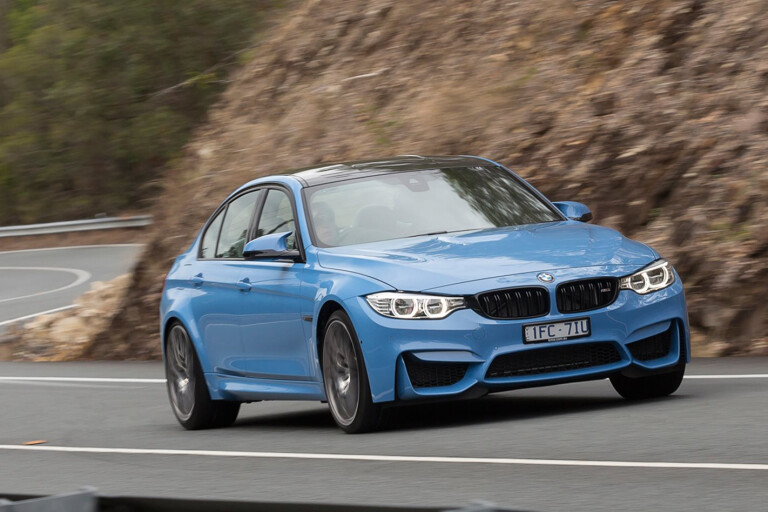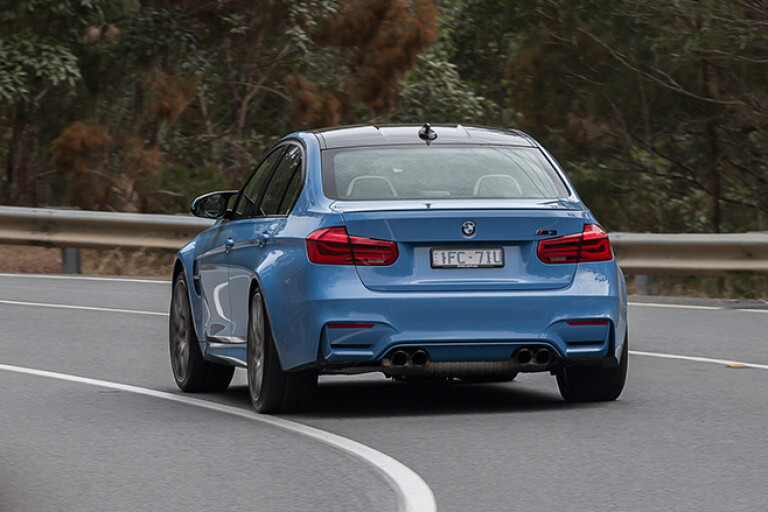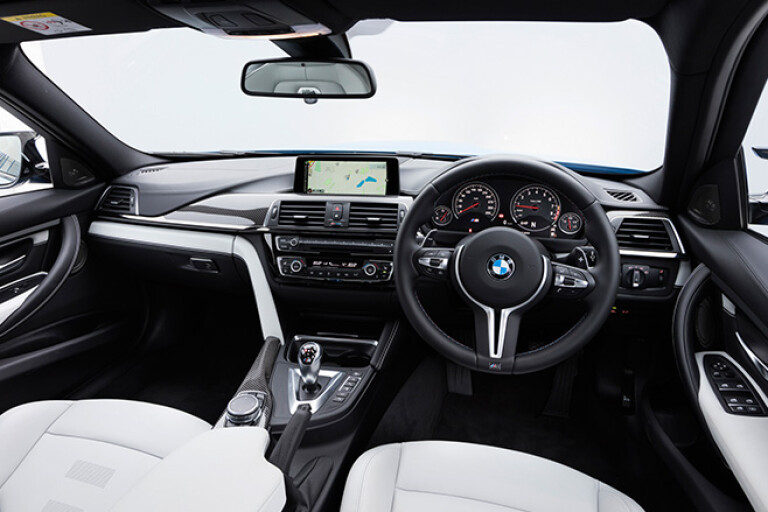Reviews

Gallery4
TELL ME ABOUT THIS CAR
The Competition model – which sells for $144,615 – is a new arrival to BMW’s M series line-up, selling alongside the regular M3, which is $5000 cheaper. While the M3 is exclusively a four-door, there is also a two-door equivalent called the BMW M4 (for which there’s also a BMW M4 Competition edition).
STRENGTHS
- The four-door M3 is $10,000 more affordable than the two-door M4. It gets exactly the same engine and performance as well as all the same gear, but you get the added practicality of two rear doors – and it costs you less.
- Performance. The 3.0-litre inline six-cylinder in the M3 Competition has 331kW of power, which is 14kW more than that of the regular M3. It is claimed to reduce the 0-100km/h time to 4.1 seconds, down from 4.2 seconds. Whereas some rivals use V8 engines, the M3 has a six-cylinder with two turbochargers. It has loads of power the instant you press the accelerator, and it maintains that enthusiasm all the way through its rev range. It’s a very willing engine and one that loves a thrash under the right conditions. The seven-speed automatic transmission also changes gears very quickly, helping with that snappy acceleration.

4
- Cornering grip. The M3 Competition gets bigger wheels and tyres than the regular M3. They are 20 inches in diameter (up from 19s on the normal M3) and 10mm wider. They’re a great set of Michelin Pilot tyres, which provide superb grip. With suspension that has been developed on a race track it makes for very responsive and confident steering – something that cements the M3 Competition as one of the fastest, most capable four-doors on the market.
- Design. The M3 Competition looks different to the regular M3. The 20-inch wheels are the biggest differentiator, and while not everyone will crave them over the 19-inch wheels on the regular M3, they at least provide a styling change that lets people know you’re driving the more powerful version. The M3 Competition also gets various black design elements outside, including a blackened grille, black exhaust pipes and a black-tinged badge. Inside, there are seatbelts with blue and red stripes through them, reinforcing the BMW M colours.
- Stopping power. The brakes on the M3 Competition are excellent, providing massive stopping power when you need it, even on a track. Those wanting to step it up a notch can fork out $15,000 more for the carbon-ceramic brakes, which can withstand higher temperatures and, therefore, even more punishment.

4
WEAKNESSES
- While it’s generally very well equipped – with things such as sat-nav, head-up display, smart key entry, digital radio, headlights that turn around corners, surround view cameras (to give a virtual overhead view) – the M3 misses out on auto emergency braking, which is increasingly common on new cars, especially luxury models.
- Comfort in regular driving. The suspension on the M3 Competition is 15 percent stiffer than that of the regular M3, something that makes it slightly rougher on bumpy roads. The grippy tyres are also prone to roaring at speed, which is noisy in the cabin, making it more difficult to have a conversation.
- Going fast. The M3 Competition is a fast car, but it’s one that requires some button pushing and a basic understanding of the technology to make it go fast. The driver can toggle between three settings to adjust the feel of the steering, the responsiveness of the throttle, the speed and aggression of gear shifts and the assistance offered by the stability control system. If you don’t have the right settings dialed up it can feel sluggish or less responsive. Fortunately there are two pre-programmable M buttons on the steering wheel, which allow you to program your favourite settings, so you only have to press one button for the slicker settings, rather than all four.

4
- The sound. BMW has stepped up the exhaust sound for the M3 Competition – the sound is a mix of genuine exhaust noise and artificial noise generated through the audio system in the cabin – and there’s more popping and burbling. But it still doesn’t have anything like the bark of some V8s it competes with. At least it has the performance!
- Fuel use. With claimed consumption of 8.8 litres per 100km, the M3 Competition is a very efficient high performance car. But the extra performance and different tyres means it uses 6 percent more fuel than the regular M3.
- Changing gears. The M3 Competition can be ordered with a six-speed manual gearbox, which is an excellent manual with crisp, decisive changes. However, the seven-speed auto – which is faster shifting, making for better acceleration – is exactly the same price. Little wonder most owners choose the automatic, which is marketed as DCT, or dual-clutch transmission.
ANY RIVALS I SHOULD CONSIDER?
The biggest rival to the M3 by far is the Mercedes-AMG C63. Another similarly-priced hot shot is Audi’s RS4; a new RS4 is currently being developed, so the RS4 currently on sale is based on the previous model. Another car worth considering is the Lexus GS F, which has more interior space than the BMW, and is similarly priced.
Please enable JavaScript to view the comments powered by Disqus.
COMMENTS